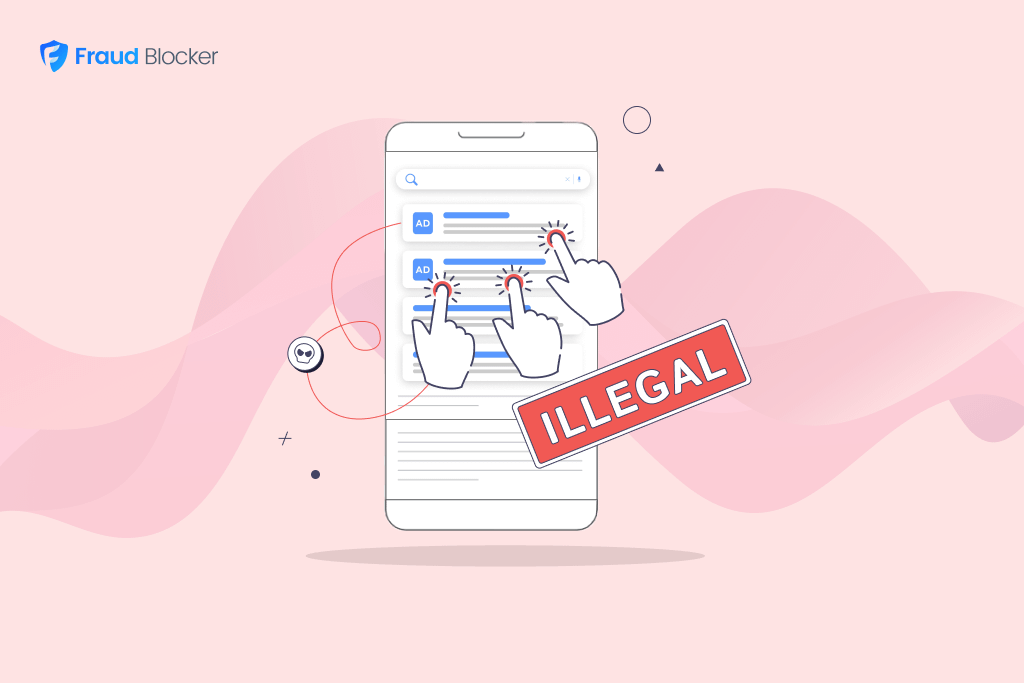
New report:
Invalid Click Rate Benchmarks


Click fraud is costing advertisers billions in loses. Learn more here.

Click fraud is costing advertisers billions in loses. Learn more here.


Click fraud costs advertisers billions annually. It involves fraudulent clicks on pay-per-click (PPC) ads, which can drain advertising budgets, distort campaign metrics, and undermine the effectiveness of marketing strategies.
A recent study by Juniper Research found that 22% of all ad clicks are wasted due to fraud, highlighting the significant impact of this issue.
This article explains the various types of click fraud, how they work and their impact on advertisers. To learn more about click fraud read our article on “What is click fraud?“
Click bots are automated programs designed to mimic human behavior by clicking on ads repeatedly. These bots can simulate mouse movements, accept cookies, and even fill out forms, making them difficult to detect. Bot networks, or botnets, are collections of compromised devices controlled remotely to generate large volumes of fraudulent clicks. These networks can involve thousands or even millions of devices, significantly amplifying the scale of the fraud.
Click farms involve hiring individuals to manually click on ads. These operations often take place in countries with low labor costs, where workers are paid minimal wages to click on ads continuously. Unlike botnets, click farms use real human interactions, making the fraudulent clicks appear more legitimate and harder to detect. Bots and click farms are often used in Facebook ad fraud to derail campaigns.
Competitor click fraud occurs when businesses click on their competitors’ ads to deplete their advertising budgets. This malicious practice aims to reduce competition by forcing rivals to exhaust their ad spend quickly, thereby gaining a competitive advantage in the ad auctions.
Pixel stuffing involves placing ads in tiny, often invisible, 1×1 pixel spaces on websites. These ads are technically displayed and can register impressions and clicks, but they are not visible to human users. This method allows fraudsters to generate a high number of fraudulent clicks without actual user engagement.
Ad stacking is a deceptive practice where multiple ads are layered on top of each other in a single ad placement. When a user clicks on the visible ad, it registers as clicks on all the stacked ads, generating multiple fraudulent clicks from a single interaction. This method significantly inflates click numbers without providing genuine engagement.
Impression laundering involves channeling ads through legitimate websites to disguise fraudulent impressions. Fraudsters use this technique to make it appear as though the ads are being displayed on reputable sites, thereby avoiding detection and increasing their ad revenue.
Ad hijacking redirects legitimate ad traffic to fraudulent websites. This can occur through malicious software or compromised ad networks, resulting in clicks that are diverted away from the intended ads and towards fraudulent ones.
Proxy servers route traffic through intermediary servers, masking the true origin of the clicks. This makes it difficult for advertisers to track and analyze the source of the clicks, complicating efforts to detect and prevent click fraud.
Incentivized clicks involve offering rewards, such as money or points, to users in exchange for clicking on ads. While this may seem like a legitimate marketing strategy, these clicks often come from users with no genuine interest in the ad content, leading to poor engagement and wasted ad spend.
Click injection targets mobile apps by generating clicks that appear to come from legitimate sources. This technique often involves manipulating the app install process to claim credit for app installs, thereby earning fraudulent ad revenue.
Domain spoofing involves impersonating high-value domains to charge premium rates for low-quality traffic. Fraudsters create fake websites that mimic reputable domains, tricking advertisers into paying higher rates for what they believe is valuable ad space.
Cookie stuffing inserts cookies from other websites into a user’s browser without their knowledge. This manipulates attribution models, allowing fraudsters to claim credit for conversions and earn commissions fraudulently.
Read more: How fraud-as-a-service is making large-scale fraud easier than every.
Fraud Blocker helps prevent many types of click fraud.
Fraud Blocker is a comprehensive ad protection solution that enhances advertising performance by employing advanced analytics to detect and prevent ad fraud. The platform utilizes sophisticated techniques to safeguard advertisers from wasting their budgets on fraudulent or invalid traffic.
Key features of Fraud Blocker include:
Read more about how you can prevent click fraud in your campaigns.
Want to try Fraud Blocker? Check out our 7-day free trial and see how much you can save on your ad campaigns by eliminating click fraud and improving their effectiveness.


